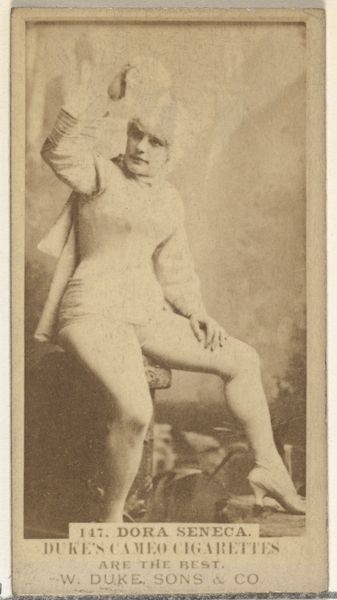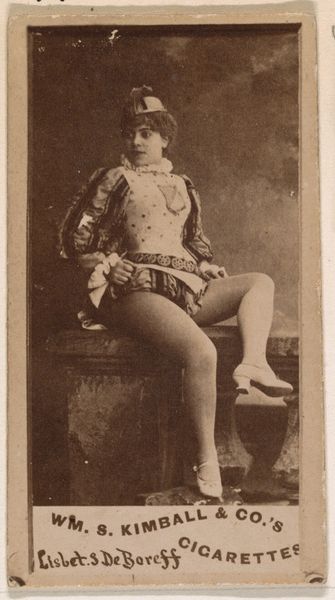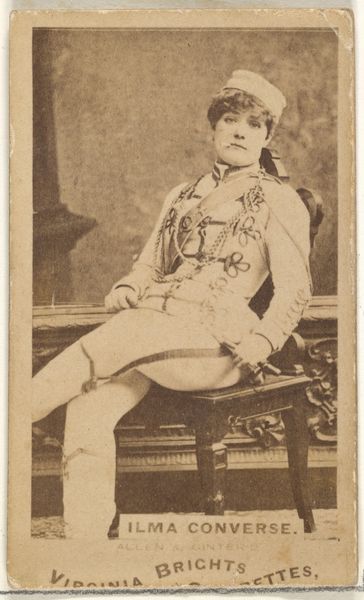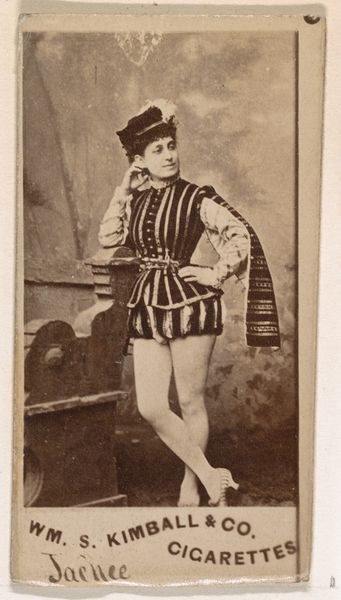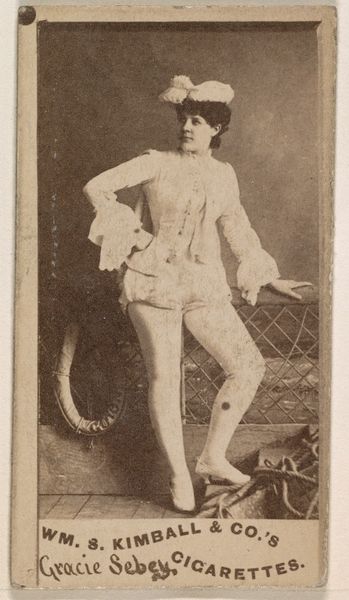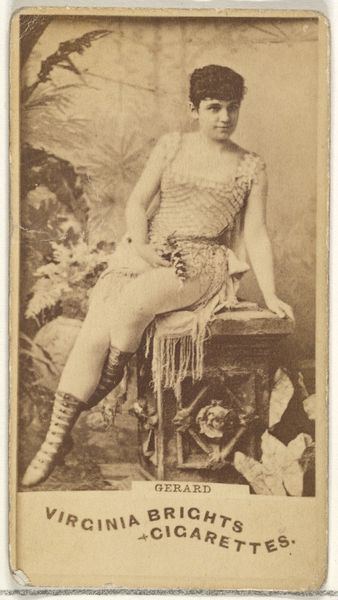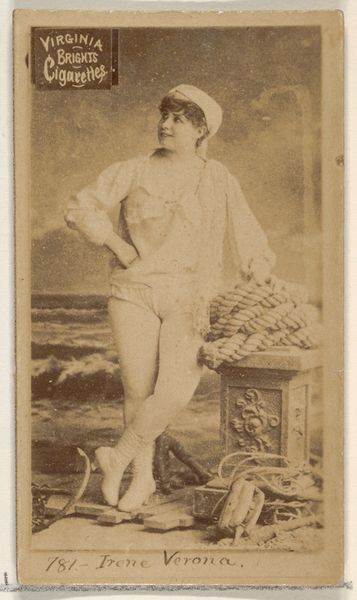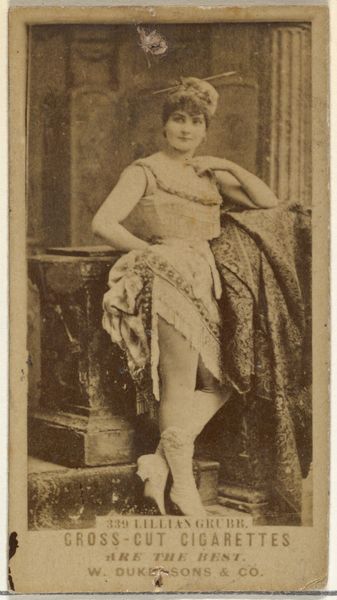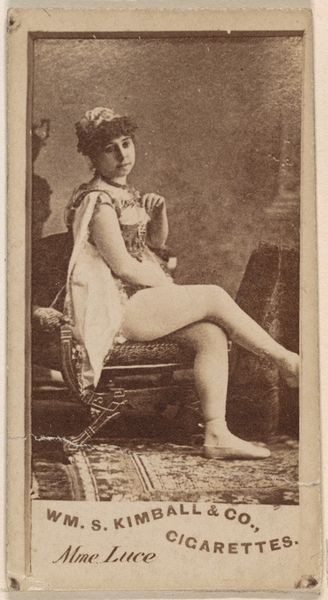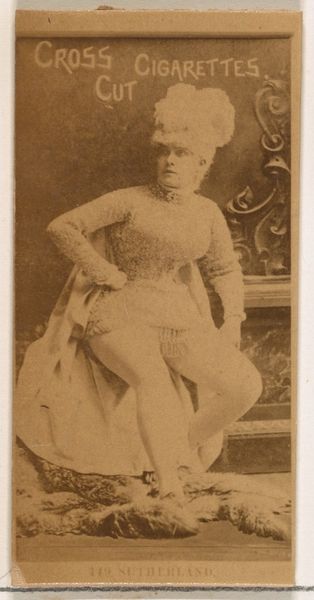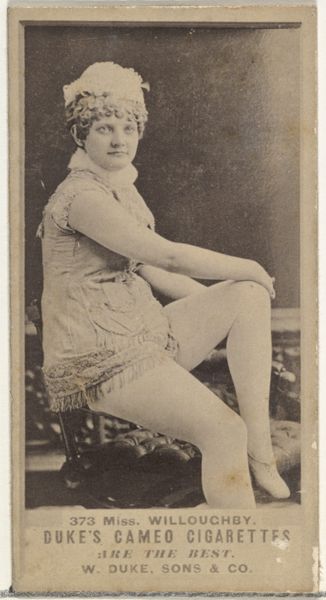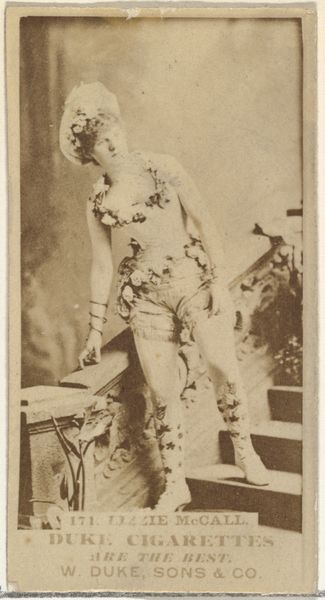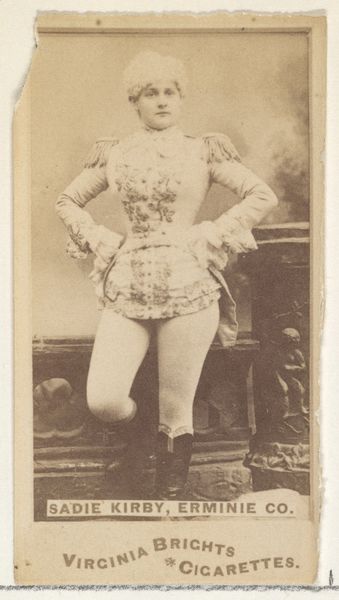
Mlle. Aina, Paris, from the Actors and Actresses series (N171) for Old Judge Cigarettes 1886 - 1890
0:00
0:00
drawing, print, photography
#
portrait
#
drawing
#
16_19th-century
#
pictorialism
# print
#
photography
#
historical photography
#
19th century
Dimensions: sheet: 2 11/16 x 1 3/8 in. (6.9 x 3.5 cm)
Copyright: Public Domain
Editor: This is “Mlle. Aina, Paris,” a photographic print from around 1886-1890, produced by Goodwin & Company as a promotional card. It's so striking how the subject's gaze avoids the viewer. What's your take on this piece? Curator: Well, this image speaks volumes about representation, gender, and commodification in the late 19th century. The "Actors and Actresses" series it's a part of was essentially trading cards for Old Judge Cigarettes, so its primary function was advertisement. But what does it mean to put women performers on these cards? What social power dynamics were at play? Editor: I see what you mean. It’s more than just a portrait. The staging and the direct connection to a product create a complicated picture. Curator: Precisely! Look at how Mlle. Aina is presented – the costume, the pose. This card helped construct and circulate ideas about femininity and celebrity. How do you think her depiction intersects with prevailing gender norms and the male gaze of the period? Editor: It's like she’s being presented as a desirable object, a commodity in herself. Yet, she possesses agency as a performer. Is there a contradiction in how commercial images from this era simultaneously empowered and objectified women? Curator: Absolutely. This tension is critical. These images gave women performers a public profile, potentially boosting their careers. However, this came at the cost of having their images used to sell products. It makes you wonder, how complicit were these women in these representations? Where can we draw lines around agency? Editor: That’s something to think about. Thanks for pointing out those nuances! I definitely see this simple card in a new, more critical light now. Curator: Likewise, considering your insightful reading of the card makes me realize the ongoing relevance of these issues of representation in our media today.
Comments
No comments
Be the first to comment and join the conversation on the ultimate creative platform.
